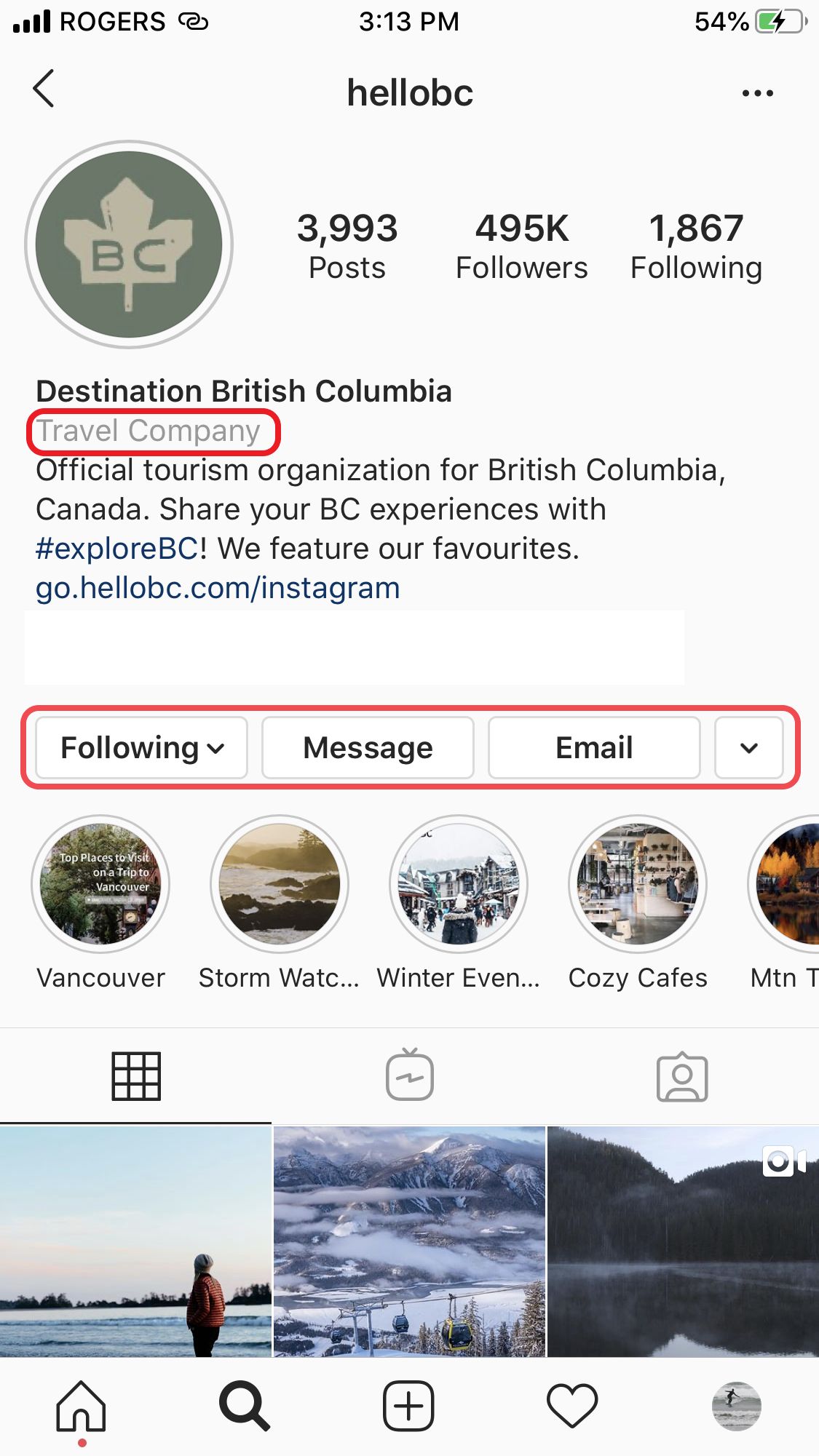Influencer Marketing 101
Influencer Marketing 101
Fun fact: the term “influencer” was added to the dictionary by Merriam-Webster in 2019. While it may have taken some time to be officially included in the English lexicon, the reality is influencer marketing is not a new concept. In the last decade alone, it has matured at a rapid pace with the proliferation of blogs and social media platforms. The space is crowded with people documenting their travel experiences from every corner of the globe to broad or niche audiences.
For many tourism businesses, it’s been a challenge keeping up with the changes, not to mention the sheer volume of influencer requests they receive. It can be overwhelming to know which influencers to work with and how. Here are some things to consider:
Strategic Context
Influencer marketing is rapidly evolving. Tourism organizations used to take a one-size-fits-all approach and would work with influencers with large digital audiences for any objective. Things are far more sophisticated now. We can find out a lot more about an influencer’s audience: where they live, how old they are, what their interests are, which brands they like.
Influencer can be an ambiguous term. It can mean someone who has influence over a large or niche audience, someone who creates great content, someone who is passionate about a brand, or it could be someone who falls into more than one of these categories.
Shifting to longer-term partnerships. Many brands and influencers are increasingly valuing long-term relationships. For influencers, it provides stability for their schedules and income. For brands, it provides an opportunity to reach an audience more frequently. One-off initiatives can still be of value for one-time promotions or product launches.
Sophistication leads to new approaches. Many brands focus on working with influencers to create content and to reach their audiences organically. Think about how you can maximize the content they create. For example: using their photos and videos on your websites, blogs, newsletters and more. You can also consider leveraging their audience through amplifying content on the influencer’s channels and creating re-marketing lists.
Advocates are often under-utilized. People who already love your business or destination can be a great source of authentic content. Influence can come in small doses, but it can add up. Advocates with skills in content creation can also be a cost-effective way to fill your photo and video gaps. Many brands—including Destination BC—are developing programs to maximize opportunities with their super fans.
How to Find Influencers
If you have a robust budget, there are platforms or agencies that can help you discover influencers to work with based on your objectives. However, if you don’t have the money for those, you can take a DIY approach. Don’t underestimate the power of an “old-fashioned” Google search, hashtag search or geotag search.
For Google, you can try searching for lists of “best” influencers. For example, you could search for “best food influencers in Alberta” to see what comes up. On Instagram, try looking under specific hashtags that might be relevant to your destination or business. You can also view the top posts from geographic locations you’re trying to target. Influencers in those markets will often appear as providing “top posts” in those galleries. Once you’ve uncovered a few good influencers, see who they’re following or calling out in their posts. It’s a rabbit hole, for sure, but if you have the time to do the legwork, it can still be effective. In addition, if you have good relationships already established with some influencers, ask them for their recommendations.
Vetting Influencers
Once you’ve identified some influencers you are interested in working with, be sure to vet them. Does their writing, photography and videography align with your brand? How about their values? Do they post on a regular basis? Do they respond to comments in a helpful way? If you see a lot of one or two-word comments that seem like spam on their posts, these could be signs that they have a lot of fake followers or use engagement bots.
You also want to make sure you work with someone with a healthy engagement rate. While the “likes” feature is hidden now from most Canadian mobile accounts, you can still often see the numbers by viewing through a browser on your computer.
To calculate the engagement rate, add together the number of likes and comments on one post, divide by the influencer’s total number of followers and multiply by 100 to get a percentage. You may want to do this for a few recent posts to get a better understanding of how an average post performs.
| Number of Followers | Healthy Engagement Rate |
| Less than 1,000 | 8% |
| 1,000 to 10,000 | 4% |
| 10,000 to 100,000 | 2.4% |
| 100,000 to 1,000,000 | 2% |
| 1,000,000 and over | 1.7% |
After you have done this first round of vetting, reach out to the influencers and gauge their professionalism in their response. You can ask them to provide their media kit and case studies. You may also wish to connect with other destinations who have hosted them to see if they would recommend working with the influencer.
If you are working with Instagram influencers, make sure they have Instagram business accounts. An Instagram business account will display a title underneath the creator’s name as well as provide options to contact the account holder directly (see example below). The benefit is you can get more analytics from the influencer on their account activity, content performance and audience data. Ask the influencer for screenshots of their Instagram Insights to help inform your decision. According to Instagram regulations, all influencers who work with brands must have business accounts.

Destination BC’s Instagram business account displays the title “Travel Company” and provides options to contact us directly.
Setting Clear Goals
Think about why you want to work with an influencer. What are you trying to achieve? Reach a new audience? Gather assets? Promote a new product? Be clear about what you’re trying to do and focus on that goal and how you’re going to measure it.
Make sure the influencer project connects with a strategic objective for your business. Is there a natural audience alignment—the influencer may have a large following but if their audience doesn’t align with your target market, what is the value to your business?
Measurement and Reporting
Here are some ways to measure results but there is no industry standard.
If your goal was leveraging an audience, some of your measurements could be the reach and engagement of the influencer’s posts. If you’re doing a paid distribution plan behind those posts, it could also be the quality and performance of their audience pools.
If you’re looking to fill content gaps, it could be the number of on-brand content pieces that are produced. You could also look at how those pieces perform vs. your average post performance.
If you’re entering into a longer-term relationship—for example, with a Brand Ambassador—you could look at how frequent their posts are, the quality of their engagement, the number of times they mention your business etc.
Make sure you also ask the influencer for the screenshots of the results of their posts, Instagram stories etc. It can help you understand how interested their audience is in the content (which can also come in handy if you’re thinking of entering a longer-term relationship with that person).
Other Things to Consider
Ad disclosure rules – Influencers need to adhere to disclosure rules set in their country. Here are the Canadian Influencer Marketing Disclosure Guidelines. For influencers based in the United States, here are the FTC’s Disclosure Guidelines.
Contract – Make sure you have a contract in place with the influencer which outlines all the pertinent information both parties have agreed to (for example:
Destination BC’s Partner Content Checklist – Hundreds of pieces of content are created and curated across our tourism partner network every day. While Destination BC strives to share and amplify industry content, the volume of requests we receive is quite large. As a result, we’ve created a content checklist for you to improve the likelihood of your content being shared within our partner network.
Destination BC’s Influencer Strategy
Destination BC has created a strategy to identify the objectives, priorities and success measurements it will focus on. To find out more, please email GlobalContent@destinationbc.ca to request a copy of the Influencer Strategy, available to our British Columbia tourism industry partners.
Last updated: September, 2020





